There were a couple of significant international events in 1902 which had a local connection—the purchase of the rights to the Panama Canal project by the United States from the French and the end of the Boer War in South Africa. We admit the Boer War connection is a bit weak but not so the adventures of Frederick Collins related below.
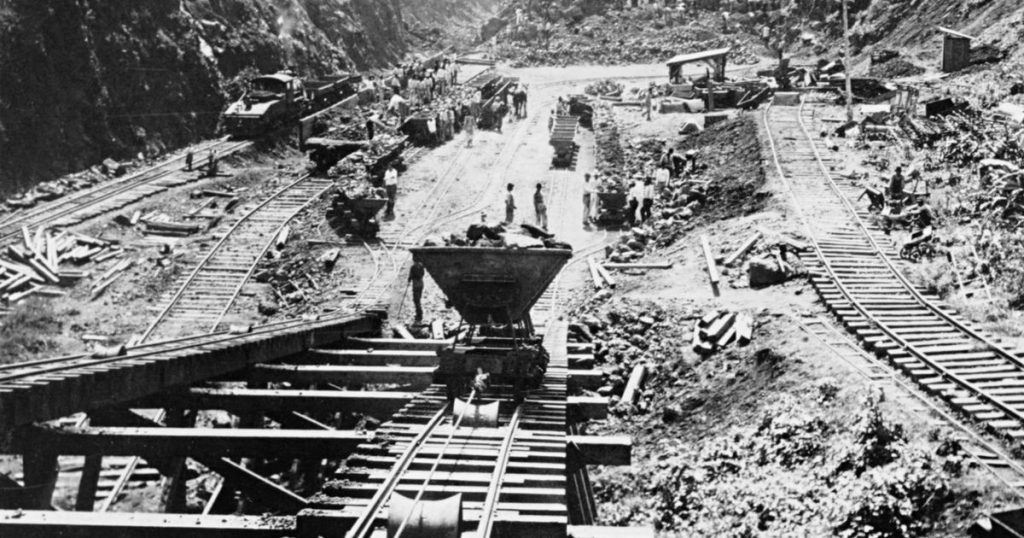
In 1902, the French finally threw in the towel after decades of failure in their attempt to construct a canal across the Isthmus of Panama. France sold the rights to the project to the United States for a token amount. The project was so massive and technically difficult that many thought it impossible. Calais had a good deal to do with the Panama Canal project in its infancy both directly and indirectly.
In 1599, five years before Samuel Champlain was instrumental in establishing the first settlement north of Florida at St. Croix Island, he explored the Indies as the Royal Geographer of Henry the IV of France. Locally the settlement at St. Croix Island gives us some claim to this great man, however tenuous. When he explored the Isthmus of Panama in 1599 Champlain observed with remarkable perspicacity:
“That if the four leagues of land which there are from Panama to this river were cut through, one might pass from the South Sea to the Ocean on the other side and thus shorten the route by more than 1500 leagues . . . ”
Champlain anticipated the canal by 300 years.
More directly connecting Calais to the Canal was the career of a Calais boy named Frederick Collins. In July 1863 Collins was appointed to the U.S. Naval Academy and began a meteoric rise in the ranks of the U.S. Navy. He sailed with Farragut on his memorable European cruise and was one of the chief officers on the first U.S. expedition to survey the Isthmus of Panama for a possible canal. He spent months in the jungle, exploring and mapping possible routes across the isthmus. He nearly died of Chagres fever. Collins became an acknowledged expert on the Isthmus of Panama and the feasibility of various routes, addressing geographical societies and writing papers for academia and the Navy. He later returned to the Isthmus for a second survey and concluded the route proposed was not the best route for an interoceanic canal but his work was in some part the foundation for finding the best route across the isthmus. He eventually settled in Washington, site of the Naval Academy but never recovered his health. He died at the age of 35 in Washington, DC, where he is buried. We believe his home was on Germain Street near the park, and he may have been a brother of Edward Collins who was killed in the battle of Cold Harbor during the Civil War.
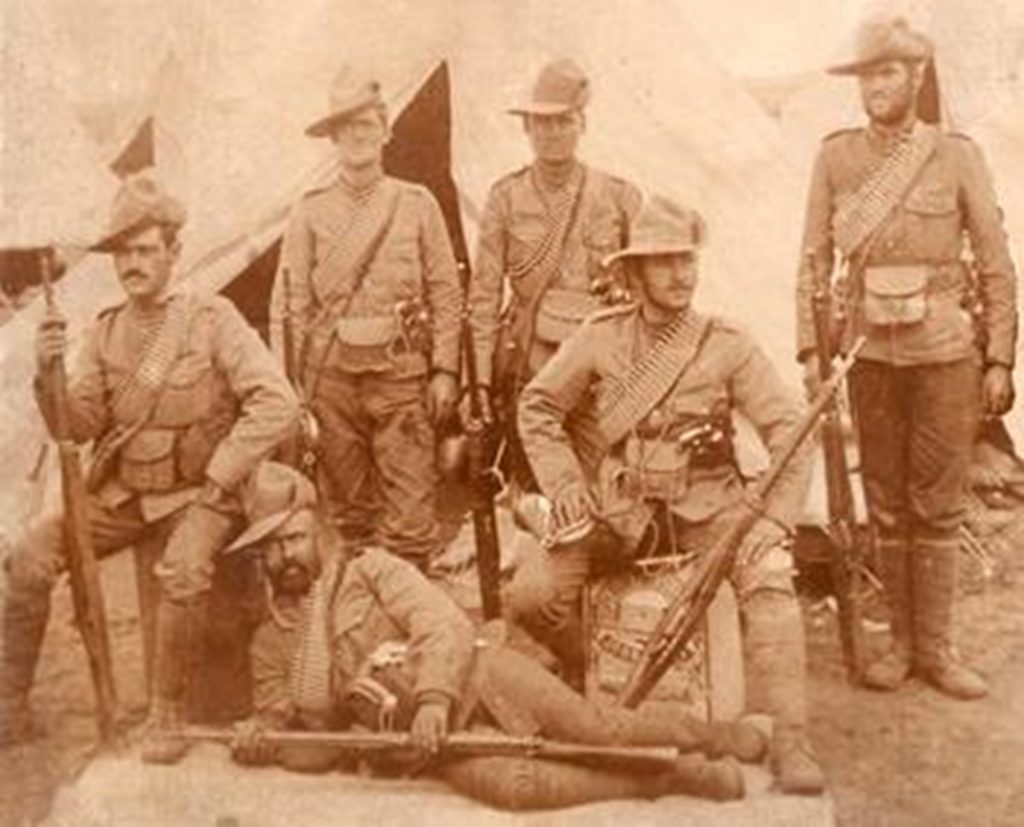
The South African War (1899 – 1902) or, as it is also known, the Boer War, marked Canada’s first official dispatch of troops to an overseas war. Some Canadian infantry are pictured above. In 1899, fighting erupted between Great Britain and two small republics in South Africa. Canada at first resisted sending troops to what was a very unpopular war of colonial expansion. Even the English were sharply divided. The war was widely and vociferously condemned by the world community including the United States. Nonetheless some of our cousins across the border eventually had to serve in the war including Harrison McKeown, son of the Methodist minister in St. Stephen who returned from the war as somewhat of a hero.
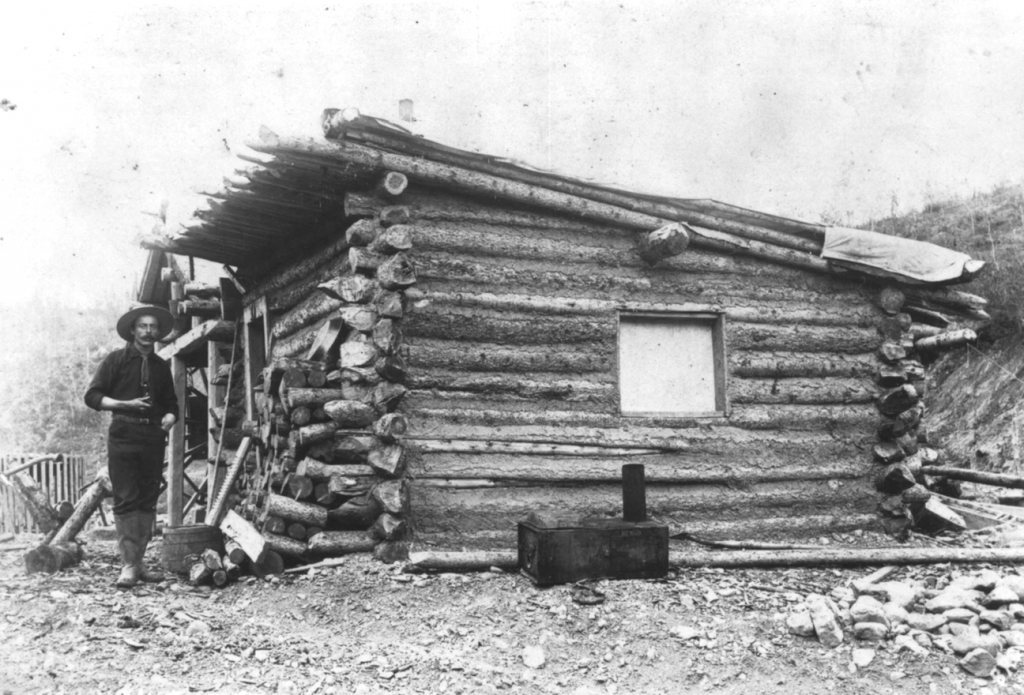
One fellow, who didn’t serve but who desperately wanted to, was a local adventurer named Herbert McAdam who grew up at Hill’s Point in St. Stephen. Above he can be seen in the Klondike seeking his fortune in the gold fields in 1900 where family history recounts “he thinks he has a good chance of striking it rich.” He came home broke with only a “few gold nuggets and gold bearing quartz” and married Christmas Simpson. When the Boer War came he volunteered for service in the Strathcona’s Horse but was refused because of an injured leg. Again family history says “This news was taken with great joy by his family.”
In other world and national news of 1902, Brussels police responded violently to a suffrage march injuring many marchers, while on the other side of the world both Tasmania and Australia granted women the right to vote. Kid Curry Logan, a charter member of Butch Cassidy and the Sundance Kid’s gang was finally captured and jailed. Coincidentally Scott Joplin’s “The Entertainer” was written in 1902 and decades later became the theme song for the movie. 1902 firsts included the first public demonstration of radio and the first brain surgery. Enrico Caruso made the first phonograph record, and Teddy Roosevelt was the first President to ride in an automobile. Speaking of autos, AAA was founded; a fellow named James Cash Penney opened his first department store; and the first full-time movie theater opened in LA. Peter Rabbit was published by Beatrix Potter as was Heart of Darkness by Joseph Conrad. A toy maker named a stuffed bear “Teddy” and the rest is history.


In its March 9, 1902 issue the New York Times published this article:
Charles E. Brown, an Eastport photographer, has presented to the Maine Historical Society finely colored photographs of large size of Capt. Sofiel Selmore and his wife, Mary, in full tribal dress. Capt. Sofiel is a full-blooded Abnaki, has never learned to speak the English language with facility, is a devoted Christian, and has for many years been the chief of the Passamaquoddy Indians, living in their principal village in Pleasant Point, in the town of Perry, Maine. He is a man of fine presence, and leads his people in tribal matters with great dignity and wisdom. He is held in highest esteem by his white neighbors. He was born in Perry, July 10, 1803 and is consequently in his 98th year. Capt. Sofiel is a member of the Maine Sons of the American Revolution. He is the son of Capt. Selmore Soctomah, who with others in his tribe served under Capt. John Allen in service on the eastern frontier, and was living as late as 1860, being then 103 years old. He was the leader of a band of fifty Indians who captured an armed British schooner in Passamaquoddy Bay during the Revolution and delivered her to Capt. Allen. Capt. Sofiel follows the Indian custom of making the Christian name of his father his own surname.
We can’t say if the above is a black and white copy of Mary’s colored photo, though we understand it is a photo of her. We believe but are not certain that the first photo above shows both Sofiel and Mary, second and third from the right, seated. Perhaps Donald Soctomah can correct us if we are wrong. Mary was 101 at the time.
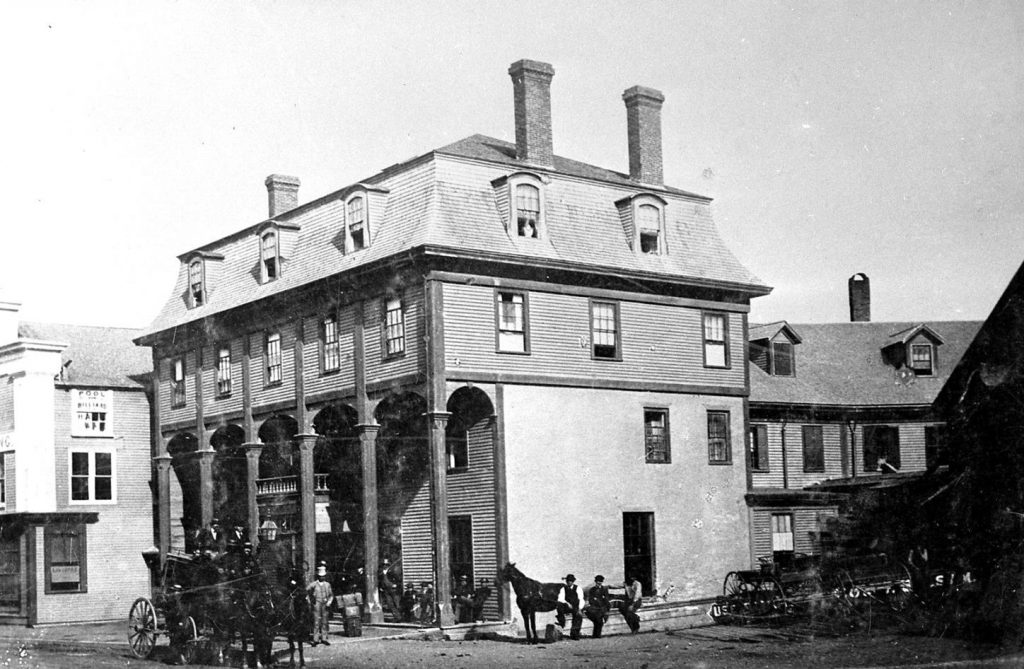
The St. Croix Exchange, later the St. Croix Hotel, was robbed in 1902 and the trial of the defendants, Charles Corr and Edward Maxwell, was the first case on the Superior Court criminal docket. As the trial was about to begin Maxwell turned State’s witness and confessed, implicating Corr and walking away a free man while Corr, stunned, was found guilty and locked up awaiting sentence. Seeing things weren’t going as expected Corr took the initiative and escaped from the jail. He was last seen in St John. A case of adultery was tried next and according to reports was hotly contested—and a not guilty returned by the jury. A few liquor cases were on the docket but continued awaiting “further evidence.” Good luck obtaining this evidence. The Advertiser reported on April 3, 1902 that the Calais City Council was to consider that week a “monster” petition “in favor of the total suppression of the liquor traffic.” The Advertiser opined “We could hardly support any project that has the total suppression of this objectionable trade in view but to make a farce of it as has been done in the past—why we think it had better be left alone. We confess we do not see how businessmen who are depending on the public for their maintenance but who happen to sit in the council for say one year, can afford to antagonize customers who may happen to be engaged in the trade, for it is a notorious fact that some of these same rum sellers will leave more money with the businesses of a town in months, than a majority of the temperance promoters will in six.”
Some other court cases tried in 1902 included several adultery cases; gambling, for which a fine of $4.00 was assessed; having illegal possession of gulls which we hardly thought would have been rare enough to protect; theft of blueberries; stealing the compass from a vessel. Maud Downes of Calais was sent to the Industrial School for being in danger of falling into habits of vice and immorality.
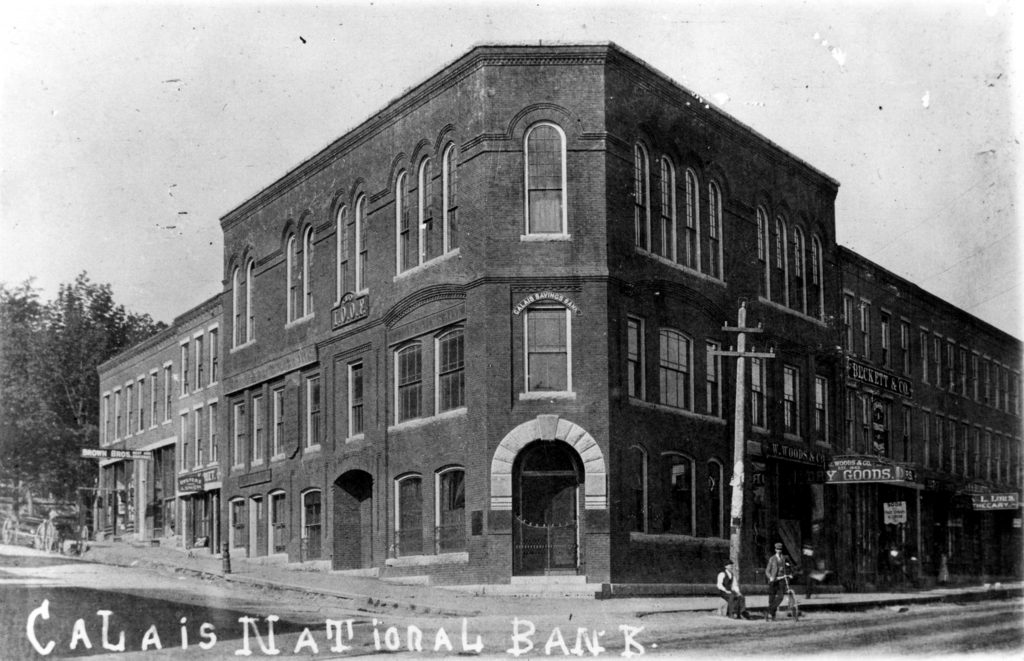
The only major fire in Calais in 1902 occurred in the new brick block at the corner of Main and North Street, later the Urban Moose building. It was only a few years old in 1902 and occupied on the third floor by the IOOF Hall where the fire started. Water damage to the floors below was extensive and the IOOF Hall itself was badly damaged by the fire. The loss was $50,000, a substantial amount in those days.

It was said 1902 was a slow year in the sardine business, but you wouldn’t know it from this photo of child labor hard at work on one of Eastport’s piers.
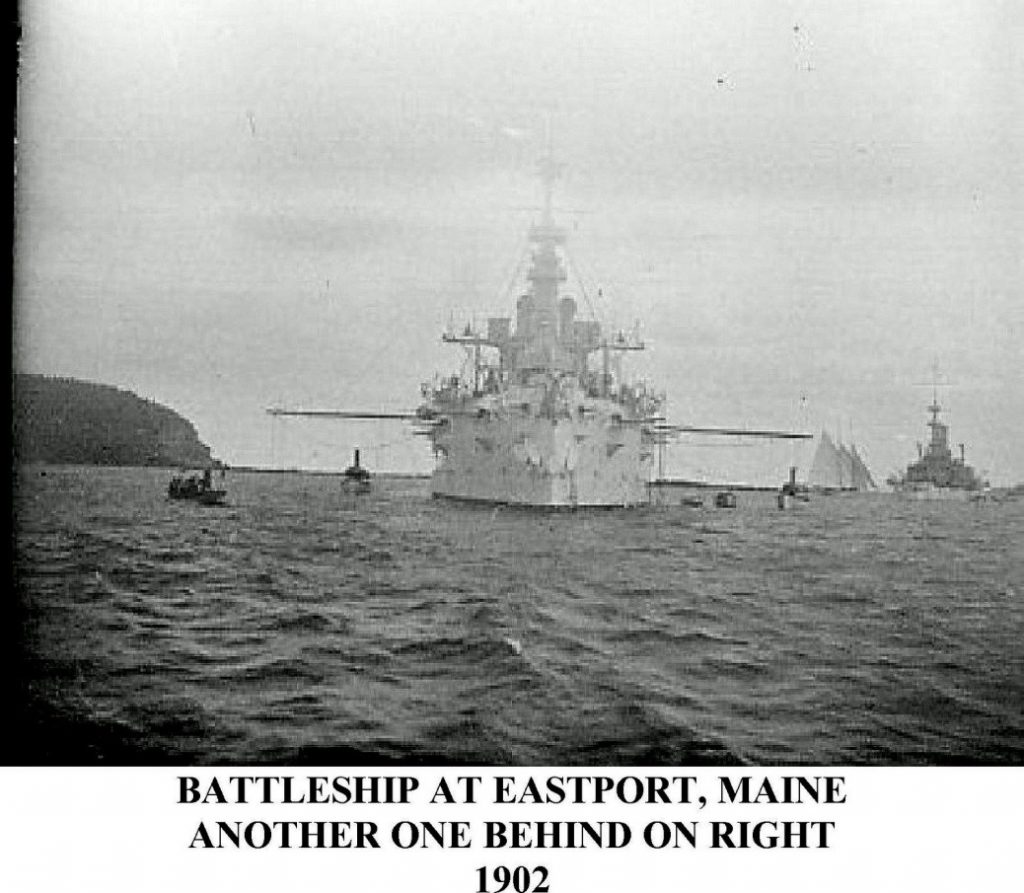
Many believe the Navy sending a ship to Eastport on the Fourth is a recent tradition. This is not the case. The above battleship, one of the finest of its day, graced Eastport’s Fourth in 1902. Another large battleship appears to be following to the right.
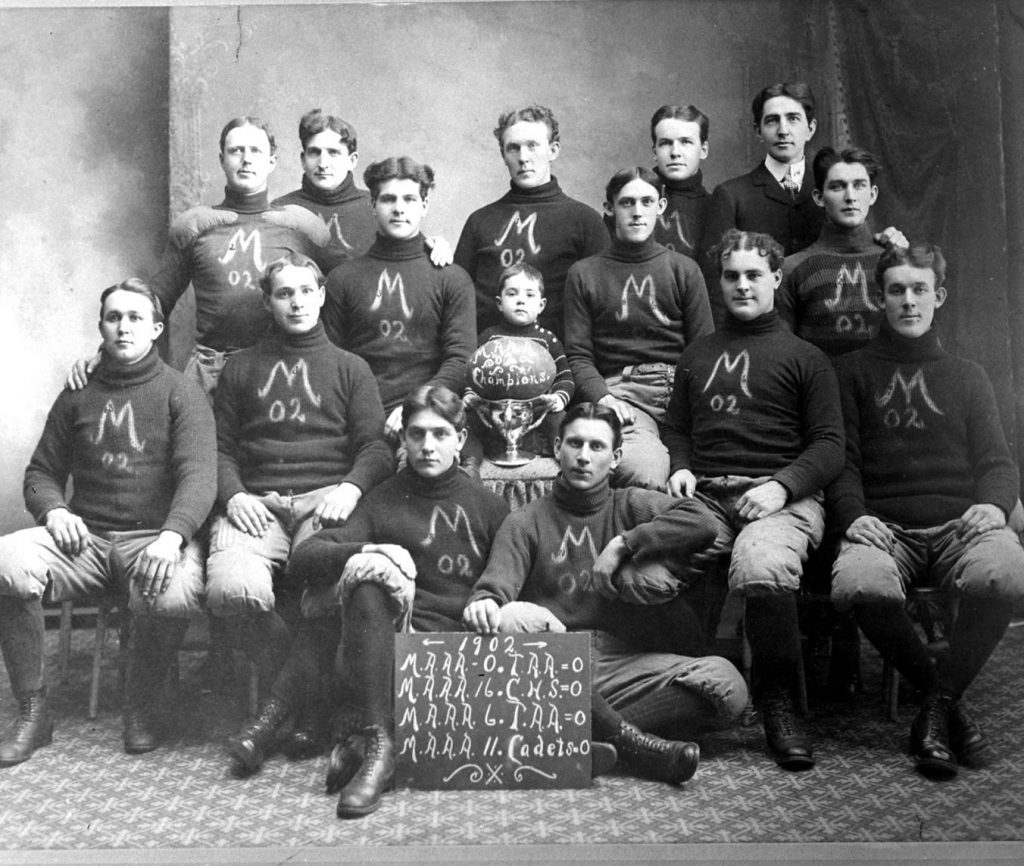
In 1902 the Maritime Amateur Athletic Association went undefeated to win what we presume is the rugby gold ball. It appears they were not scored on during their four games and beat Calais 16-0. If anyone knows anything about this photo please let us know. We are just guessing what MAAA stands for.
Finally a few items of interest from 1902: The Chipman Hospital opened; a matron was paid $35 per month, a nurse in training $8 and an orderly $20.00. For those who collect bottles, the Old Homestead Ginger Beer Company was organized in 1902 and received 6000 stone bottles from England. These still appear on Ebay. Israel Andrews arrived in town and opened the Andrews Hotel which became Andrews Tobacco, and St. Stephen organized its first girls’ basketball team.
